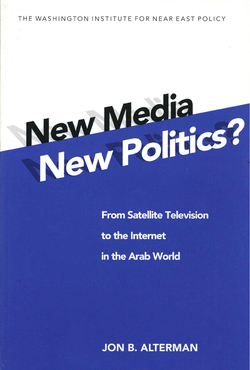 For good marketing reasons, no doubt, Alterman avoided using the term "transnational media" in his title, for it would surely loose him half his potential audience. Yet, "transnational media" in the Arabic-speaking countries is precisely what his innovative study covers. He devotes a chapter each to the London- and Paris-based Arabic-language newspapers, the many new satellite television stations, and that sleeping giant, the internet. He shows how the emergence of these new media presents a novel and serious challenge to the old order of regime censorship. With the possible exception of Iraq, no longer can the autocrats in power fully decide what their subjects read, see, and hear.
For good marketing reasons, no doubt, Alterman avoided using the term "transnational media" in his title, for it would surely loose him half his potential audience. Yet, "transnational media" in the Arabic-speaking countries is precisely what his innovative study covers. He devotes a chapter each to the London- and Paris-based Arabic-language newspapers, the many new satellite television stations, and that sleeping giant, the internet. He shows how the emergence of these new media presents a novel and serious challenge to the old order of regime censorship. With the possible exception of Iraq, no longer can the autocrats in power fully decide what their subjects read, see, and hear.
The old-fashioned media, Alterman finds, "rail against the unfairness of purported U.S. and Israeli control of international institutions, they are blind to domestic news, and they cover neither intellectual developments nor human interest stories." The new media fill at least some of these many holes. Increasingly, as he felicitously puts it, the situation in the Arabic-speaking countries resembles that in the West, where governments have a "voice but not a veto" over information about their activities. Although alive to the potential problems this can spur, overall, Alterman is optimistic about the impact of these new media, as one might expect an American analyst to be, believing in the benefits of freer speech.
New Media, New Politics? has not just the virtue of an important and new thesis, but also many fascinating details. The Lebanese journalists who staff the newspapers may prefer Paris but the publications are mostly located in London because that is where the owners, predominantly from the Persian Gulf, prefer to live. Not only are most of the newspapers and television stations owned by Saudis, but the Saudi market is overwhelmingly the most important for the upscale audience that ambitious media need to sell to advertisers; in 1994, $12.5 million out of $13 million of one London-based newspaper's total ad revenues came from there. Still, advertising expenditures in the entire Arab world (with a population of over 200 million) come to only $900 million a year, hardly bigger than the $800 million in Israel (with a population of just 6 million).